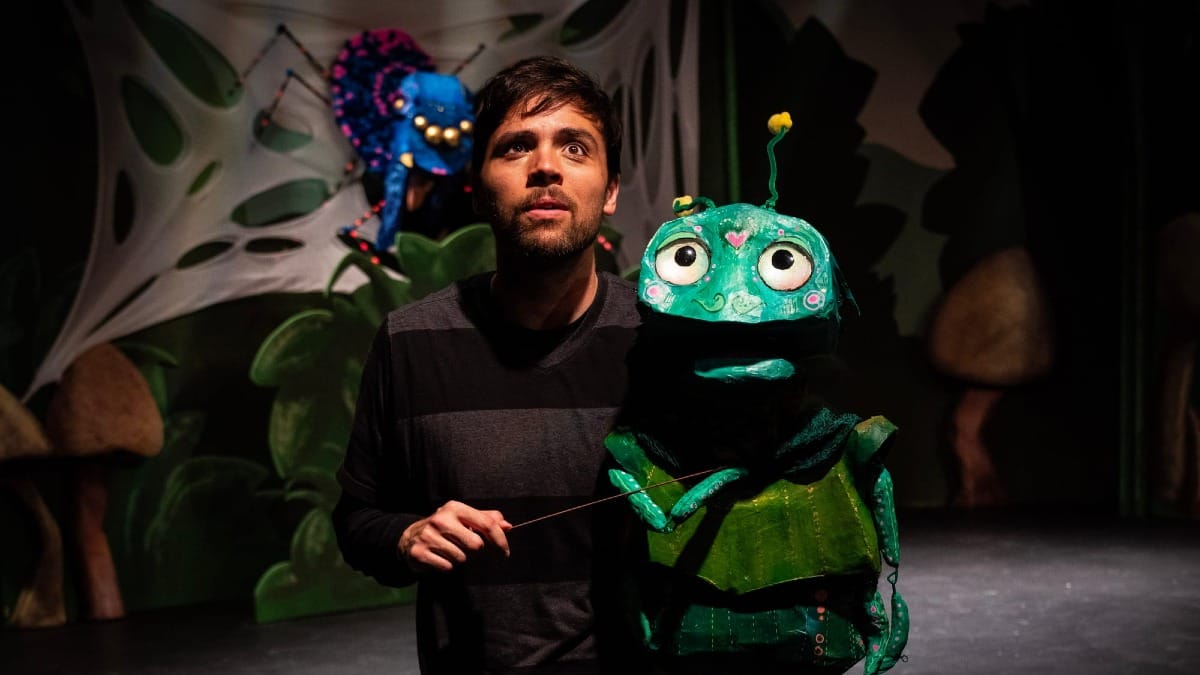Full Interview: Spencer Meyers on Puppet Design for The Butterfly’s Evil Spell

By Avery Anderson
In this full-length Q&A, Tampa-based designer Spencer Meyers opens up about the creative process behind Jobsite Theater’s cardboard-puppet-driven dark fable, The Butterfly’s Evil Spell. From folk art influences to the problem-solving behind papier-mâché bugs, Spencer offers a detailed and heartfelt look at what it means to build characters out of cardboard — and watch them come alive on stage.
Let’s start with the big picture: What drew you to The Butterfly’s Evil Spell?
When we initially started talking about this show, I thought it was interesting — but at first, we weren’t planning to use puppets. David had the idea to use cardboard, and even though I’d only worked with foam before, I figured cardboard had to be easier. That was... both true and false.
I had to learn how to manipulate the material. Fortunately, I teamed up with Katrina Stevenson, who plays the butterfly and designed its wings. She also built the firefly and glow worm puppets, which allowed me to focus on the others.
How would you describe the design aesthetic?
It’s folk art fable. Every puppet looks hand-painted and intentionally flawed — that “beautifully imperfect” feel. I drew inspiration from Spanish and Scandinavian folk art. The beetles are gritty, angular, and grounded. The butterfly is ethereal and flowing — curved, soft, and glittering. She needed to look like something a beetle could fall in love with.
Curio, our main character, is the only green puppet. He’s based on the Picasso beetle and the scarab. I gave him glass eyes to create depth and emotion.
How did the surreal tone influence your designs?
The puppets are made to look like storytellers created them — simple but expressive. The show is poetic and darkly funny, and I love working in that space. I grew up watching Labyrinth, The Dark Crystal, Legend. That energy shows up in my work. These aren't cartoon bugs; they’re anthropomorphic characters with real emotions.
Walk us through your puppet design process.
First, I go through the script and map out every character and their traits — social class, humor, movement. I sketch based on insect inspiration. For example, Doña was always a ladybug. I exaggerated her curves and gave her red wings that hang like a shawl.
After sketching, I build. I create a head first, then add the body. Every puppet has a plastic mouth plate with an elastic band for puppeteer control. Some got custom features: magnets, papier-mâché, foam detailing. Each puppet took two to four days to complete.
What challenges did you face working with cardboard?
Cardboard limits movement more than foam, but I embraced that. I left parts of the neck open for flexibility and used fabric wings to reduce friction noise. The “Girl with Fly” puppet was supposed to use magnets, but that didn’t work — I added a dowel instead.
How closely did you collaborate with the actors and director?
It was a full team effort. David Jenkins knows puppetry, and our choreographer Alexander Jones helped the actors merge with the puppets. I joined rehearsals once the blocking was done and gave tips for each puppet. I’ve been at every rehearsal since. It’s magical to watch them come alive.
Is there one puppet you're most proud of?
I love all of them, but the Girl with Fly makes me laugh every time. She was only supposed to appear once, but now she has a full arc.
How does this project compare to your past work?
It’s been a journey. My work with Jobsite started with skulls for The Skull of Connemara, then props for A Midsummer Night’s Dream, Stranger Sings, and ALICE. I had to learn how to build for each show. But with Butterfly, I finally got to create puppets that look exactly like I imagined them.
What do you hope audiences take away?
I hope people get pulled into the story. I’ve watched these puppets so much that I now forget the actors are there — I just see the characters. That’s the goal.
And finally — what’s something people misunderstand about puppet design?
It’s both easy and hard. You need planning and creativity — and time for trial and error. The performance informs every step. I rebuilt Curio’s head entirely because the first version looked scary!
But it brings me joy. Anyone can make a puppet. Grab a paper bag, a milk jug, some googly eyes — just create. We could all use more imagination in our lives.
